Dr. Phil Zeltzman’s Blog
Minnie has a tumor in the jaw bone
Minnie, a 9 year old beagle, had a cherry-sized mass behind her upper canine tooth.
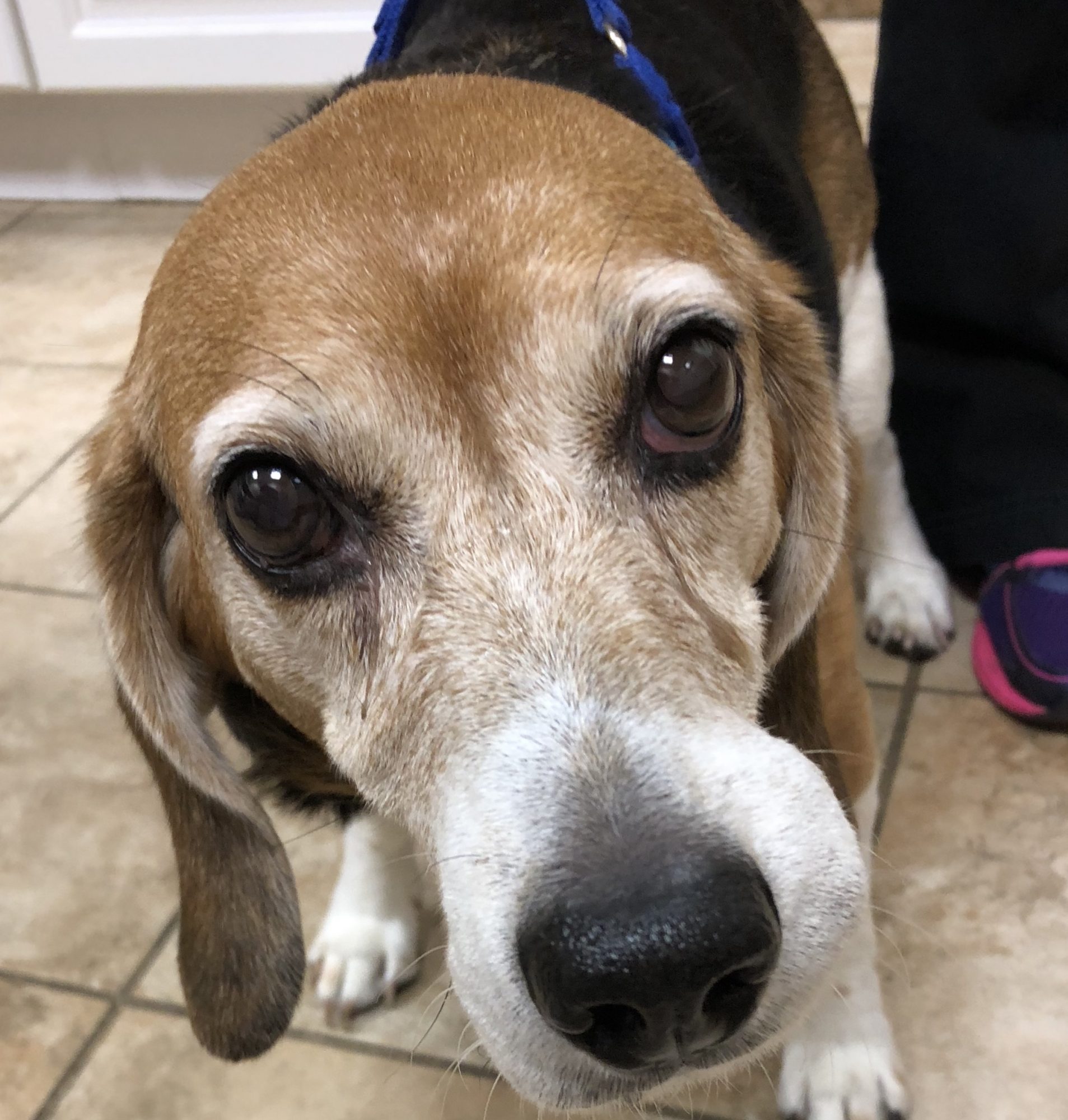
The mass had been present for a while and kept growing. Is it generically called an epulis, an unfortunate name that doesn’t mean much. An epulis can be benign or malignant. It can be unimportant or extremely aggressive. So it’s a very misleading name.
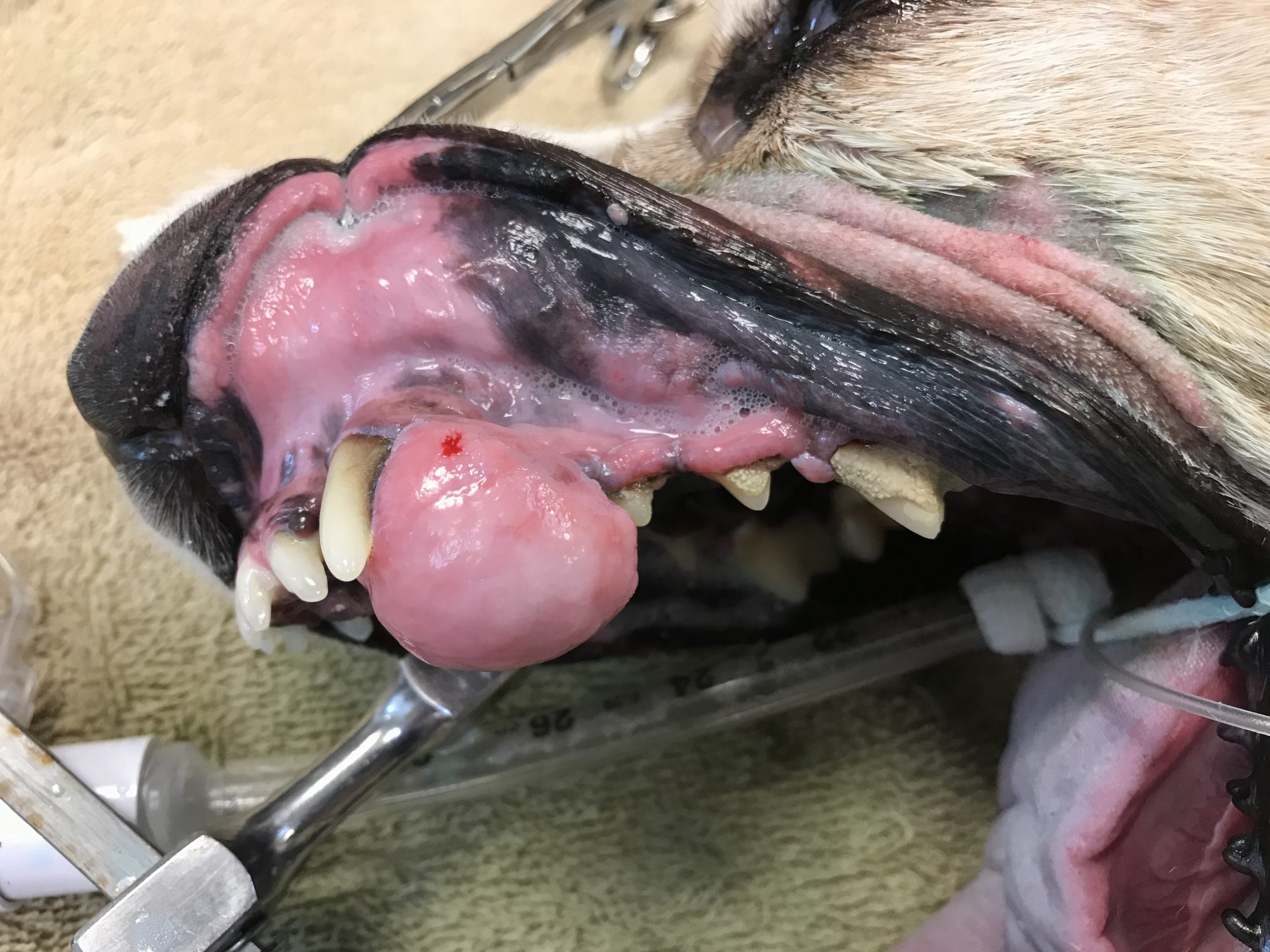
She was referred for surgery at Mountain Shadow Veterinary Hospital ( www.mountainshadowveterinary.com ) .
After a physical exam, blood work and chest X-rays (to check for spreading to the lungs), it was decided that Minnie was a good candidate for anesthesia and surgery.
Part of her upper jaw (maxilla) would have to be removed in order to hopefully “get it all.” Surgery went well.
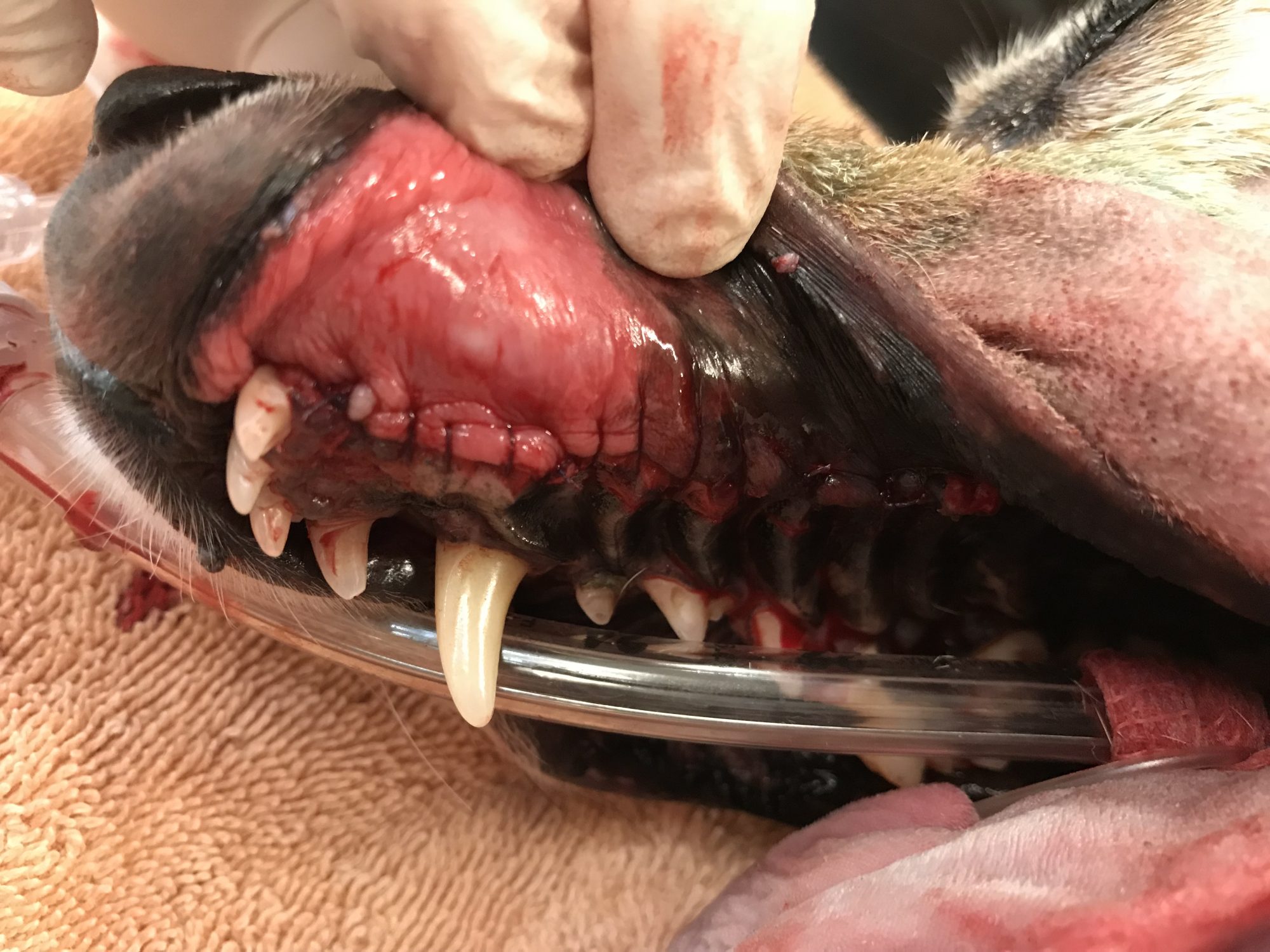
Even though pet owners are typically horrified when such an invasive surgery is recommended, pets don’t look as grotesquely disfigured as they imagine.
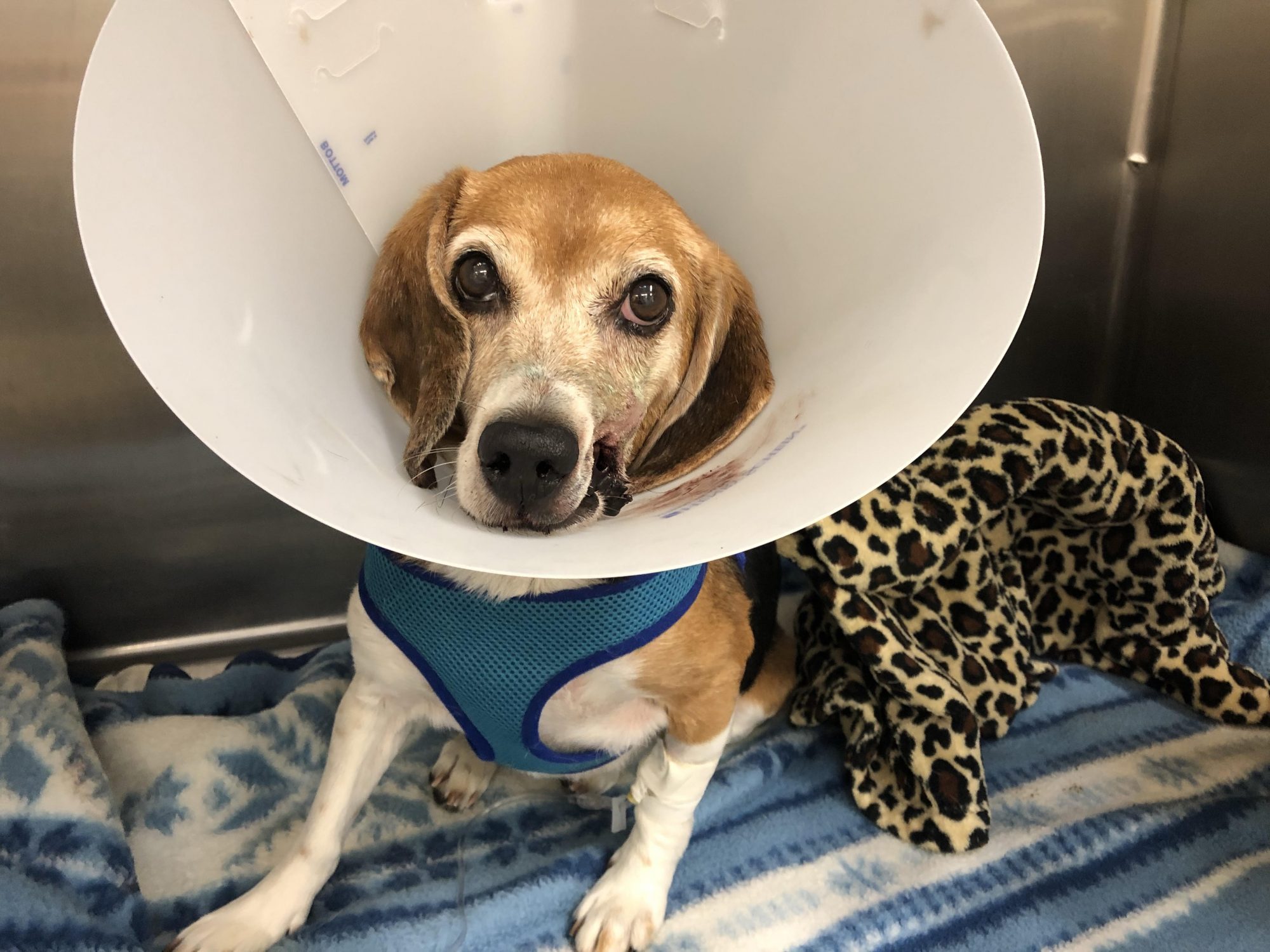
The most amazing thing is that most dogs eat soon after surgery, sometimes the evening of surgery! In Minnie’s case, she ate the day after surgery.
About a week later, the biopsy came back as ameloblastoma, which is a “locally aggressive” tumor. What it means is that the tumor eats the bone away. This is the other reason we need to remove so much tissue (bone) around the mass.
Even though a large portion of her jaw had to be removed, Minnie has recovered very well and can now enjoy life again.
Phil Zeltzman, DVM, DACVS, CVJ, Fear Free Certified

Dr. Phil Zeltzman is a traveling veterinary surgeon in Pennsylvania & New Jersey. An award-winning author, he loves to share his adventures in practice along with information about vet medicine and surgery that can really help your pets. Dr. Zeltzman specializes in orthopedic, neurologic, cancer, and soft tissue surgeries for dogs, cats, and small exotics. By working with local family vets, he offers the best surgical care, safest anesthesia, and utmost pain management to all his patients. Sign up to get an email when he updates his blog, and follow him on Facebook, too!
Penny gets a new lease on life
Penny, a 7 year old Labrador, was in deep trouble.
She couldn’t go on walks or function normally. She was suffocating because of a condition called laryngeal paralysis (aka “lar par”). This meant that her larynx (or voice box) was paralyzed and didn’t allow her to have enough oxygen on board.
Her owner wrote: “Lately, Penny has had several episodes where she had great difficulty catching her breath, especially after exercise or excitement. The last one of these episodes was severe enough to make her tongue go bluish for a short time.”
She had surgery at Brodheadsville Vet Clinic (www.brodheadsvillevet.com) in Brodheadsville, PA, in order to open up her larynx with permanent sutures (tie-back surgery).
Three days after surgery, her owner writes: “Overall Penny is doing fantastic! Her breathing is immensely improved and our hardest problem right now is keeping her calm.”
She recovered smoothly and two months after surgery, she could go on walks in the woods again.
Here is her story in video: www.youtube.com/watch?v=TvSMSLNeZRs&t=5s
As I always say, laryngeal paralysis is not a death sentence. With the proper care, patients can have a normal, happy life.
Phil Zeltzman, DVM, DACVS, CVJ, Fear Free Certified

Dr. Phil Zeltzman is a traveling veterinary surgeon in Pennsylvania & New Jersey. An award-winning author, he loves to share his adventures in practice along with information about vet medicine and surgery that can really help your pets. Dr. Zeltzman specializes in orthopedic, neurologic, cancer, and soft tissue surgeries for dogs, cats, and small exotics. By working with local family vets, he offers the best surgical care, safest anesthesia, and utmost pain management to all his patients. Sign up to get an email when he updates his blog, and follow him on Facebook, too!
You did cosmetic surgery on your dog’s WHAT???
Piper, a 6 year old Labrador, had battled bladder infections for her entire life. They cleared up with antibiotics, but kept coming back.

Her family vet at South Mountain Veterinary Hospital (www.southmountainvethospital.com) diagnosed what is called a redundant vulvar fold, which is an extra fold of skin covering her vulva. It is also called “recessed vulva” or “vulvar fold dermatitis”. This is a fairly common condition, especially in overweight dogs, and many go un-diagnosed for years.
How can a skin fold cause bladder infections?
The extra skin fold creates a deep pocket that traps urine. In turn, this pocket creates a warm, moist and dark environment, which is perfect for bacteria to multiply. This causes ongoing infections and sometimes a foul odor. Here is a picture of Piper’s back end before surgery: you can’t see her vulva at all.
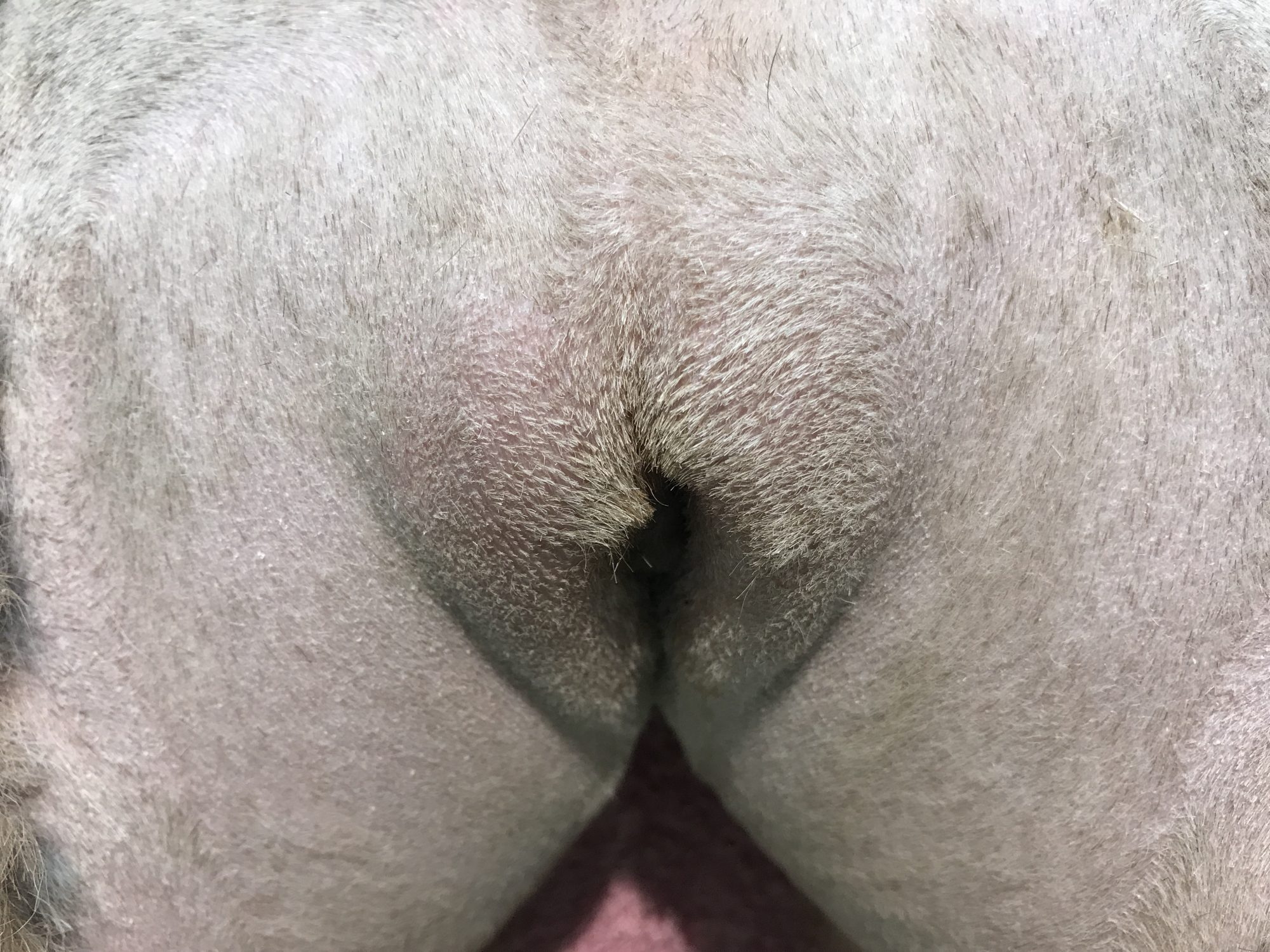
Signs of bladder infections may include licking of the vulva, scooting of the back end, bloody urine and “accidents” in the house. Other conditions may cause similar signs, so your family vet should eliminate other problems, such as bladder stones and even bladder cancer.
How can we fix this annoying condition?
- The Band-Aid approach is the “medical” treatment. We only treat the symptoms by wiping the area and prescribing antibiotics. This does not treat the cause, so it often frustrating because the infection is likely to come back.
- The ideal treatment is surgery. It’s basically plastic surgery on a dog’s vulva! Surgery involves removing the extra skin to provide better ventilation of the vulva.
This reconstructive surgery is called a vulvoplasty or an episioplasty. The main difficulty of the surgery is to remove exactly the right amount of skin: not too much and not too little. Here is a picture of Piper’s back end after surgery.
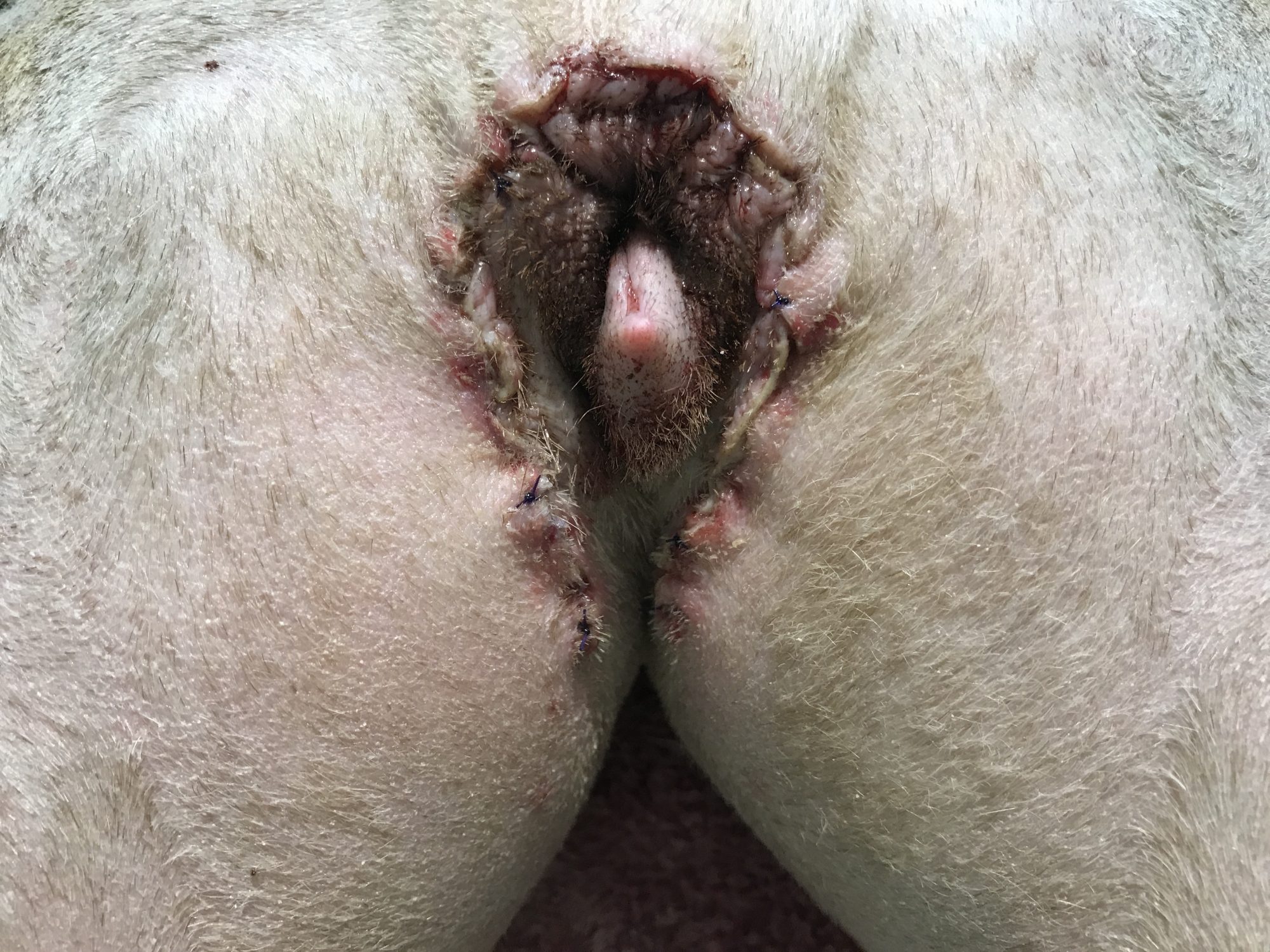
Recovery generally takes 3 weeks. I don’t use external skin sutures, so there are no stitches to remove in this sensitive area… All stitches are internal and eventually dissolve. An E collar (plastic cone) is worn for the full 3 weeks to prevent licking and to protect the incision.
Overall, this is a common yet frustrating condition. Fortunately, surgery is typically very successful and pet owners are usually very happy with the end result… as well as their dogs!

Dr. Phil Zeltzman is a traveling veterinary surgeon in Pennsylvania & New Jersey. An award-winning author, he loves to share his adventures in practice along with information about vet medicine and surgery that can really help your pets. Dr. Zeltzman specializes in orthopedic, neurologic, cancer, and soft tissue surgeries for dogs, cats, and small exotics. By working with local family vets, he offers the best surgical care, safest anesthesia, and utmost pain management to all his patients. Sign up to get an email when he updates his blog, and follow him on Facebook, too!
Labrador with laryngeal paralysis hits the road to recovery
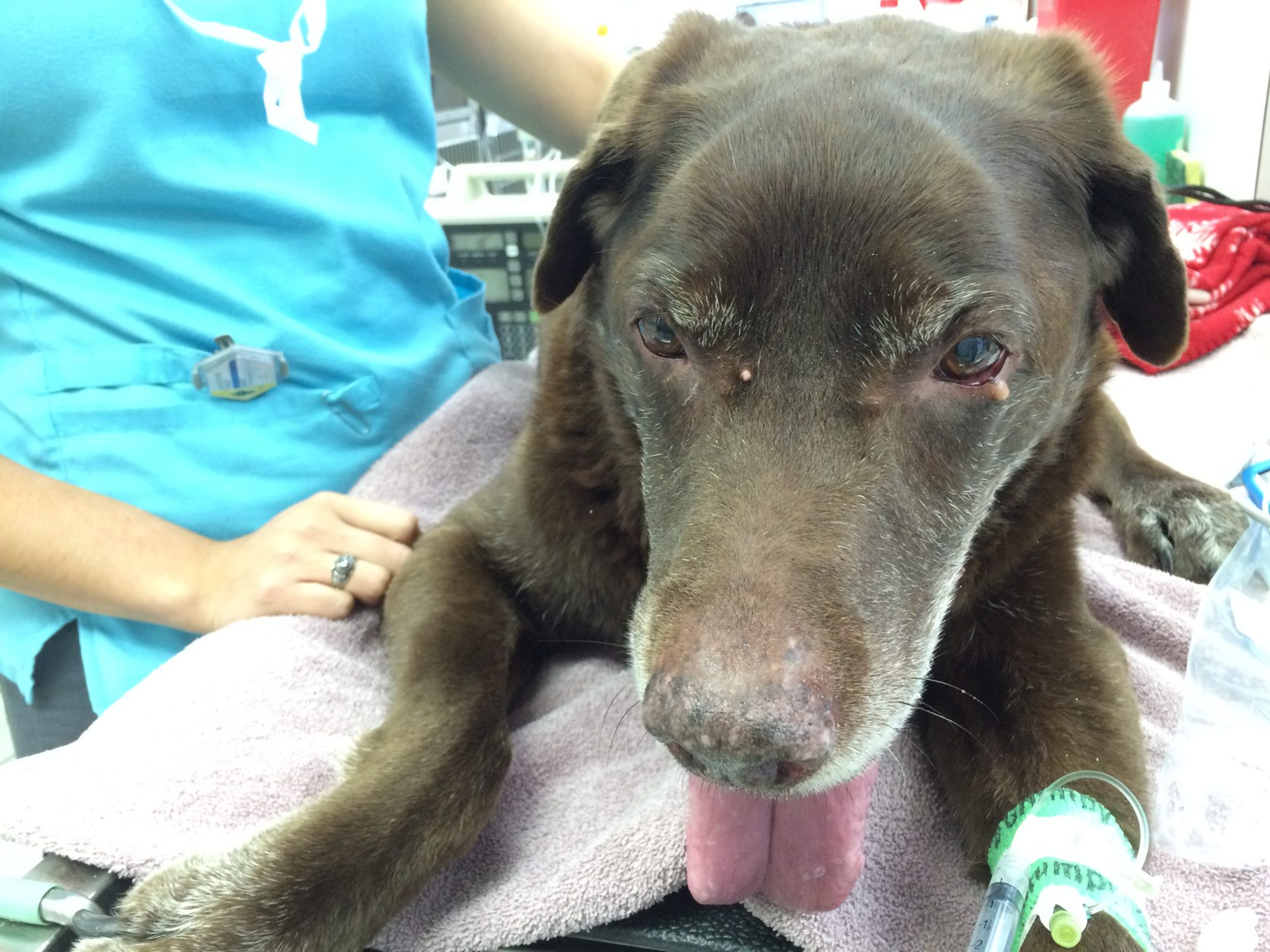
They say that a journey begins with a single step, but sometimes that step is into your car so you can drive five hours for a scheduled surgery!
Hershey’s owner drove all the way from Jamestown, New York near Lake Erie so I could perform surgery at Barton Heights Veterinary Hospital in Pennsylvania. It was quite the road trip.
Hershey is an eleven-year-old Lab whose laryngeal paralysis made it difficult for him to breathe. A complicating factor is that he’s diabetic. Hershey’s vet was not sure that surgery was the best bet, but his owner loves Hershey and wasn’t ready to give up on her best friend.
You can see a video of Hershey and his surgery below. He struggles to breathe before the surgery, but after we perform a “tie back” procedure there’s a nice, wide opening. This lets oxygen get in. A tie back surgery uses nylon sutures to keep one side of the larynx open. Two hours after surgery, you can hear the difference! There’s no more struggling and just nice quiet breathing.
You can also see that a small tumor on Hershey’s eyelid was removed. That is a benign tumor called a chalazion, or an adenoma of a Meibomian gland.
Hershey spent a restful night at Barton Heights, and left the hospital for a five hour drive home!

Dr. Phil Zeltzman is a traveling veterinary surgeon in Pennsylvania & New Jersey. An award-winning author, he loves to share his adventures in practice along with information about vet medicine and surgery that can really help your pets. Dr. Zeltzman specializes in orthopedic, neurologic, cancer, and soft tissue surgeries for dogs, cats, and small exotics. By working with local family vets, he offers the best surgical care, safest anesthesia, and utmost pain management to all his patients. Sign up to get an email when he updates his blog, and follow him on Facebook, too!
German Shepherd needs surgery to catch his breath
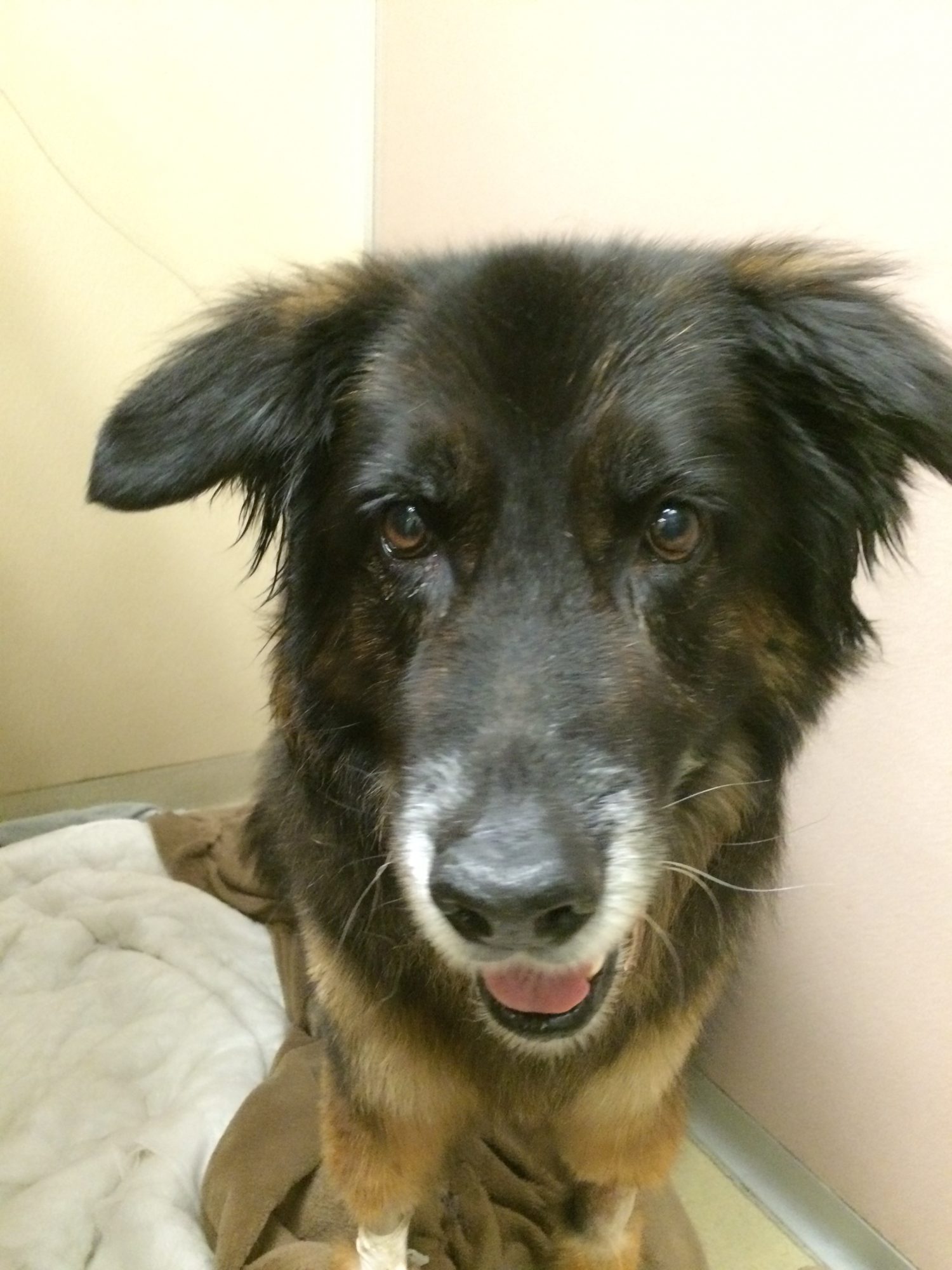 Yuengling, a 7-year-old German Shepherd, had swelling along the left side of his tongue. The mass was so large that Yuengling was having difficulty breathing.
Yuengling, a 7-year-old German Shepherd, had swelling along the left side of his tongue. The mass was so large that Yuengling was having difficulty breathing.
This is called a ranula, or a mucocele. It’s a large pocket of saliva often formed after trauma to a salivary gland. I performed surgery at Berks Animal Emergency & Referral Center and cut the pocket open and sutured the edges together.
But before I could close the incision, the thick, ropy saliva needed to be aspirated. You can see the mass and part of the surgery in the video below.

Dr. Phil Zeltzman is a traveling veterinary surgeon in Pennsylvania & New Jersey. An award-winning author, he loves to share his adventures in practice along with information about vet medicine and surgery that can really help your pets. Dr. Zeltzman specializes in orthopedic, neurologic, cancer, and soft tissue surgeries for dogs, cats, and small exotics. By working with local family vets, he offers the best surgical care, safest anesthesia, and utmost pain management to all his patients. Sign up to get an email when he updates his blog, and follow him on Facebook, too!

